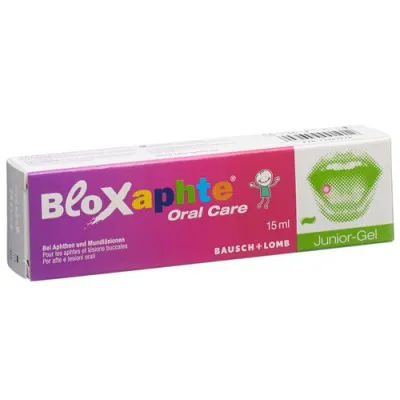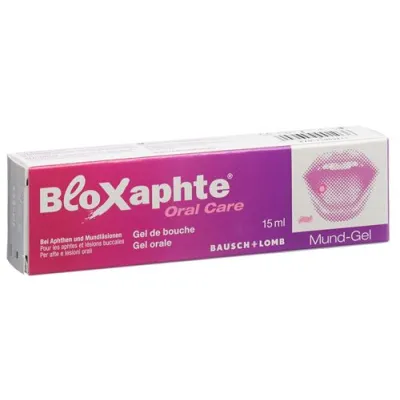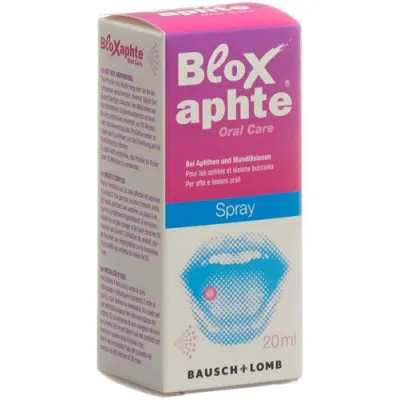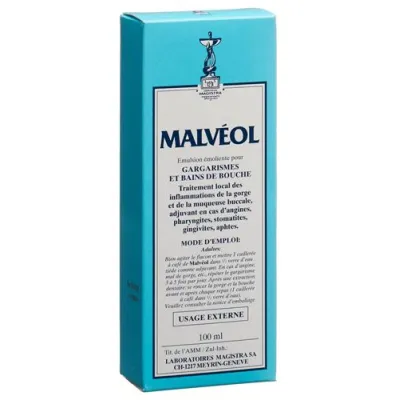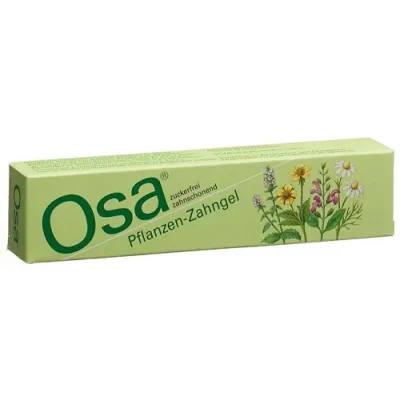biocort cream for eczema
(1 Pages)
Bloxaphte oral care junior gel tube 15ml
Characteristics of Bloxaphte Oral Care Junior gel Tb 15 mlCertified in Europe CEStorage temp min/max 15/25 degrees CelsiusAmount in pack : 1 mlWeight: 27g Length: 145mm Width: 40mm Height: 30mm Buy Bloxaphte Oral Care Junior gel Tb 15 ml online from Switzerland..
22.16 USD
Bloxaphte oral care oral gel tube 15 ml
Characteristics of Bloxaphte Oral Care Oral Gel 15ml TbAnatomical Therapeutic Chemical (АТС): A01AD11Active ingredient: A01AD11Certified in Europe CEStorage temp min/max 15/25 degrees CelsiusAmount in pack : 1 mlWeight: 27g Length: 30mm Width: 147mm Height: 41mm Buy Bloxaphte Oral Care Oral Gel 15ml Tb online from Switzerland..
22.16 USD
Bloxaphte oral care spray bottle 20ml
Characteristics of Bloxaphte Oral Care Spray 20 ml FlAnatomical Therapeutic Chemical (АТС): A01AD11Active ingredient: A01AD11Certified in Europe CEStorage temp min/max 15/25 degrees CelsiusAmount in pack : 1 mlWeight: 66g Length: 44mm Width: 44mm Height: 102mm Buy Bloxaphte Oral Care Spray 20 ml Fl online from Switzerland..
22.16 USD
Dentohexin solution 100 ml
Dentohexin works against bacteria and fungi that can cause inflammation in the mouth and throat. Dentohexin is used to treat inflammatory and infectious diseases in the mouth and throat; such as inflammation of the gums, bleeding gums, periodontitis, aphthous ulcers and pressure points on dentures. Dentohexin is used before and after dental procedures. In addition, Dentohexin can be used to support limited oral hygiene, to support caries prophylaxis, bad breath and dental plaque. Swissmedic-approved patient informationDentohexine 0.2%Streuli Pharma AGWhat is Dentohexine 0.2% and when is it used?Dentohexin works against bacteria and fungi that can cause inflammation in the mouth and throat. Dentohexin is used to treat inflammatory and infectious diseases in the mouth and throat; such as inflammation of the gums, bleeding gums, periodontitis, aphthous ulcers and pressure points on dentures. Dentohexin is used before and after dental procedures. In addition, Dentohexin can be used to support limited oral hygiene, to support caries prophylaxis, bad breath and dental plaque. When should Dentohexin 0.2% not be taken/used?In the event of hypersensitivity to one of the ingredients. For ulcers or sores with mucous membrane detachments in the mouth. When is caution required when taking / using Dentohexin 0.2%?With regular use, a reversible discoloration of the teeth and tongue can occur. Do not get Dentohexin in the eye or ear canal. In very rare cases, chlorhexidine triggers allergies. Typical signs are itching, general reddening of the skin, hives, asthma or isolated circulatory reactions. Stop using Dentohexin immediately and contact your dentist or doctor immediately. Longer use of Dentohexin should only take place after consultation with the doctor or dentist. Tell your doctor, pharmacist or druggist if you suffer from other diseases,have allergies ortake other medicines (including those you bought yourself!) or use them externally!Can Dentohexin 0.2% be taken/used during pregnancy or while breastfeeding?During pregnancy and breastfeeding, you should only use Dentohexin after consulting your doctor or nurse use doctor. How to use Dentohexin 0.2%?Adults and children over 6 yearsThe Dentohexin solution is diluted with equal parts of water. In the mornings and evenings after meals, preferably 15 minutes after brushing your teeth (rinse your mouth thoroughly with water between brushing your teeth and using Dentohexin), with 5 ml Dentohexin solution and 5 ml water each (see classification on the enclosed measuring cup) Rinse and gargle for about 20 seconds. Spit out solution, do not swallow or rinse. In the case of prosthesis inflammation, clean the prosthesis and then soak it in undiluted Dentohexin solution for 5 minutes. Rinse mouth additionally as described above. Children and adolescents should have their treatment checked by a dentist or doctor every six months. The use and safety in children under 6 years of age has not yet been tested. Follow the dosage provided in the package leaflet or prescribed by your doctor/dentist. If you think the medicine is too weak or too strong, talk to your doctor/dentist, pharmacist or druggist. What side effects can Dentohexin 0.2% have?The following side effects can occur when using Dentohexin: Common (affects 1 to 10 users in 100)A yellowish, sometimes darker discolouration of the teeth and fillings has been observed frequently with long-term use. This discoloration can be largely prevented by thoroughly brushing your teeth with a cleansing toothpaste before using Dentohexin. In exceptional cases, the teeth must be cleaned by a specialist. Uncommon (affects 1 to 10 users in 1000)Different taste sensations or numbness of the tongue. Rare (affects 1 to 10 users in 10,000)Rarely, hypersensitivity reactions (reddened, painful gums, allergic reactions of the skin, mucous membranes and respiratory organs) occur (see «When is caution required when using Dentohexin 0.2%?»). In individual cases, serious allergic reactions have also been described after topical application of chlorhexidine. If you get any side effects, talk to your doctor, pharmacist or druggist. This also applies in particular to side effects that are not listed in this leaflet. What else needs to be considered?The medicinal product may only be used up to the date marked «EXP» on the container. Storage InstructionsStore at room temperature (15-25 °C) and out of the reach of children. Further informationYour doctor/dentist, pharmacist or druggist can provide you with further information. These people have the detailed information for specialists. What does Dentohexin 0.2% contain?1 ml of concentrate for preparation of a solution for the oral cavity contains Active ingredientsChlorhexidini digluconas 2 mg, ExcipientsGlycerolum (85 per centum), Polysorbatum 20, Menthae piperitae aetherolum, Rosae aetherolum, Cinnamomi aetherolum, Anisi aetherolum, E 127 (erythrosine), aqua purificata. Approval number50174 (Swissmedic) Where can you get Dentohexine 0.2%? What packs are available?In pharmacies and drugstores without a doctor's prescription. Solution (with measuring cup) of 100 ml, 200 ml and 1000 ml. Authorization holderStreuli Pharma AG, 8730 Uznach. This leaflet was last checked by the drug authority (Swissmedic) in August 2020. ..
16.06 USD
Dentohexin solution 200 ml
Dentohexin works against bacteria and fungi that can cause inflammation in the mouth and throat. Dentohexin is used to treat inflammatory and infectious diseases in the mouth and throat; such as inflammation of the gums, bleeding gums, periodontitis, aphthous ulcers and pressure points on dentures. Dentohexin is used before and after dental procedures. In addition, Dentohexin can be used to support limited oral hygiene, to support caries prophylaxis, bad breath and dental plaque. Swissmedic-approved patient informationDentohexine 0.2%Streuli Pharma AGWhat is Dentohexine 0.2% and when is it used?Dentohexin works against bacteria and fungi that can cause inflammation in the mouth and throat. Dentohexin is used to treat inflammatory and infectious diseases in the mouth and throat; such as inflammation of the gums, bleeding gums, periodontitis, aphthous ulcers and pressure points on dentures. Dentohexin is used before and after dental procedures. In addition, Dentohexin can be used to support limited oral hygiene, to support caries prophylaxis, bad breath and dental plaque. When should Dentohexin 0.2% not be taken/used?In the event of hypersensitivity to one of the ingredients. For ulcers or sores with mucous membrane detachments in the mouth. When is caution required when taking / using Dentohexin 0.2%?With regular use, a reversible discoloration of the teeth and tongue can occur. Do not get Dentohexin in the eye or ear canal. In very rare cases, chlorhexidine triggers allergies. Typical signs are itching, general reddening of the skin, hives, asthma or isolated circulatory reactions. Stop using Dentohexin immediately and contact your dentist or doctor immediately. Longer use of Dentohexin should only take place after consultation with the doctor or dentist. Tell your doctor, pharmacist or druggist if you suffer from other diseases,have allergies ortake other medicines (including those you bought yourself!) or use them externally!Can Dentohexin 0.2% be taken/used during pregnancy or while breastfeeding?During pregnancy and breastfeeding, you should only use Dentohexin after consulting your doctor or nurse use doctor. How to use Dentohexin 0.2%?Adults and children over 6 yearsThe Dentohexin solution is diluted with equal parts of water. In the mornings and evenings after meals, preferably 15 minutes after brushing your teeth (rinse your mouth thoroughly with water between brushing your teeth and using Dentohexin), with 5 ml Dentohexin solution and 5 ml water each (see classification on the enclosed measuring cup) Rinse and gargle for about 20 seconds. Spit out solution, do not swallow or rinse. In the case of prosthesis inflammation, clean the prosthesis and then soak it in undiluted Dentohexin solution for 5 minutes. Rinse mouth additionally as described above. Children and adolescents should have their treatment checked by a dentist or doctor every six months. The use and safety in children under 6 years of age has not yet been tested. Follow the dosage provided in the package leaflet or prescribed by your doctor/dentist. If you think the medicine is too weak or too strong, talk to your doctor/dentist, pharmacist or druggist. What side effects can Dentohexin 0.2% have?The following side effects can occur when using Dentohexin: Common (affects 1 to 10 users in 100)A yellowish, sometimes darker discolouration of the teeth and fillings has been observed frequently with long-term use. This discoloration can be largely prevented by thoroughly brushing your teeth with a cleansing toothpaste before using Dentohexin. In exceptional cases, the teeth must be cleaned by a specialist. Uncommon (affects 1 to 10 users in 1000)Different taste sensations or numbness of the tongue. Rare (affects 1 to 10 users in 10,000)Rarely, hypersensitivity reactions (reddened, painful gums, allergic reactions of the skin, mucous membranes and respiratory organs) occur (see «When is caution required when using Dentohexin 0.2%?»). In individual cases, serious allergic reactions have also been described after topical application of chlorhexidine. If you get any side effects, talk to your doctor, pharmacist or druggist. This also applies in particular to side effects that are not listed in this leaflet. What else needs to be considered?The medicinal product may only be used up to the date marked «EXP» on the container. Storage InstructionsStore at room temperature (15-25 °C) and out of the reach of children. Further informationYour doctor/dentist, pharmacist or druggist can provide you with further information. These people have the detailed information for specialists. What does Dentohexin 0.2% contain?1 ml of concentrate for preparation of a solution for the oral cavity contains Active ingredientsChlorhexidini digluconas 2 mg, ExcipientsGlycerolum (85 per centum), Polysorbatum 20, Menthae piperitae aetherolum, Rosae aetherolum, Cinnamomi aetherolum, Anisi aetherolum, E 127 (erythrosine), aqua purificata. Approval number50174 (Swissmedic) Where can you get Dentohexine 0.2%? What packs are available?In pharmacies and drugstores without a doctor's prescription. Solution (with measuring cup) of 100 ml, 200 ml and 1000 ml. Authorization holderStreuli Pharma AG, 8730 Uznach. This leaflet was last checked by the drug authority (Swissmedic) in August 2020. ..
26.04 USD
Malveol emuls 100 ml
Malveol contains mallow, a plant that, thanks to its mucilage, has a soothing effect on injuries and promotes decongestion in inflamed tissues. Malveol is an emollient and antiseptic (disinfectant) emulsion for local treatment of diseases of the throat and oral mucosa. Local treatment of acute diseases in the oral cavity and throat, such as sore throat, stomatitis (inflammation of the oral mucosa), gingivitis (inflammation of the gums) and aphthous ulcers. As adjuvant treatment for angina. Swissmedic-approved patient informationMalveol®EHC (EUROPEAN HEALTH CORPORATION) SAWhat is malveol and when is it used?Mallow contains mallow, a Plant that, thanks to its mucilage, has a soothing effect on injuries and promotes the decongestion of inflamed tissues. Malveol is an emollient and antiseptic (disinfectant) emulsion for local treatment of diseases of the throat and oral mucosa. Local treatment of acute diseases in the oral cavity and throat, such as sore throat, stomatitis (inflammation of the oral mucosa), gingivitis (inflammation of the gums) and aphthous ulcers. As adjuvant treatment for angina. When not to use malveol?If you are allergic to any of the ingredients in malveol, you should avoid using this medicine. When is caution required when using Malveol?Malveol may only be used by patients who have mastered the gargling technique. Children and adolescents may only use Malveol with a doctor's prescription and only as a second-line remedy if they have a fever associated with influenza, chickenpox or other viral diseases. If, during such an illness or after it has healed, impaired consciousness followed by severe vomiting, a doctor must be consulted immediately. Inform your doctor, pharmacist or druggist if you suffer from other illnesses, have allergies or are taking other medicines (even those you bought yourself!) or using them externally!. May Malveol be used during pregnancy or while breastfeeding?During pregnancy and while breastfeeding, Malveol may only be used on medical advice. How do you use mallow?AdultsAfter vigorously shaking the bottle, add a teaspoon of mallow to ½ glass of lukewarm water give and gargle. After an operation: Rinse the throat and oral cavity before and after each meal (½ teaspoon of malveol in ½ glass of water). For local brushing: Use Malveol undiluted according to the doctor's instructions. For mouthwash: ½ teaspoon of malveol in ½ glass of lukewarm water. The use and safety of Malveol in children and adolescents has not yet been tested. Malveol should only be used with a doctor's prescription and only as a second-line treatment in children and adolescents with fever associated with a viral disease (see "When should you be careful when using Malveol?"). The solution can be accidentally swallowed. Therefore, use as a mouthwash or gargle is not recommended for children under 6 years of age. Follow the dosage given in the package leaflet or as prescribed by your doctor. If you think the medicine is too weak or too strong, talk to your doctor, pharmacist or druggist. What side effects can malveol have?Local hypersensitivity reactions. If you notice side effects that are not described here, you should inform your doctor, pharmacist or druggist. What else needs to be considered?Store at room temperature (15-25 °C). Pharmaceuticals should be kept out of the reach of children. The medicinal product may only be used up to the date marked «EXP» on the container. Your doctor, pharmacist or druggist can provide you with further information. These people have the detailed information for specialists. What does mallow contain?Active ingredients: 1 g emulsion contains: 335 mg marshmallow leaf mucilage, 335 mg mallow leaf mucilage, 4 mg salicylic acid, 4.5 mg peppermint oil. Excipients: flavorings, saccharin, vanillin and excipients. Approval number11275 (Swissmedic). Where can you get mallow? What packs are available?In pharmacies and drugstores, without a doctor's prescription. Bottles of 100 ml emulsion. Authorization holderEHC European Health Corporation SA Genève This leaflet was last checked by the drug authority (Swissmedic) in November 2007. ..
35.76 USD
Mundisal gel tube 10 g
What is Mundisal Gel and when is it used? Mundisal is a gel for pain and inflammation associated with injuries in the mouth, for teething problems in babies and small children, and for pressure and sores caused by dentures and orthodontic appliances (e.g. for orthodontics). When Mundisal Gel is applied locally, the active ingredient choline salicylate is quickly absorbed through the oral mucosa and achieved within 5 Minutes its analgesic and anti-inflammatory effect, which lasts about 2-3 hours. Mundisal Gel may only be used in children and adolescents with fever in connection with a viral disease if prescribed by a doctor and only as a second-line drug (see «When should caution be taken when taking Mundisal Gel?»).When should Mundisal Gel not be used?If you are hypersensitive (allergic) to salicylates or another You must not use Mundisal Gel. When should you be careful when using Mundisal Gel? If you have a higher fever or if there is no improvement within a week, you should consult a doctor. Children and adolescents with fever associated with influenza, chickenpox or other viral diseases may only use Mundisal Gel as directed by the doctor and only as a second choice. If these diseases lead to disturbances of consciousness with vomiting or after they have subsided, the doctor should be consulted immediately. This medicinal product contains 60 mg alcohol (ethanol) per application of 1 cm gel strand. There is no expected effect on the ability to drive and use machines. It can cause a burning sensation on damaged skin. Inform your doctor if you Pharmacist or druggist or your doctor if yousuffer from other diseases,have allergies ortake other medicines (including those you bought yourself!) or use them externally!Can Mundisal Gel be used during pregnancy or breastfeeding?If you are pregnant, want to become pregnant or are breastfeeding, you should Only use Mundisal Gel after consulting your doctor. Mundisal Gel should not be used in the last third of pregnancy. As a precaution, you should avoid taking medicines during pregnancy and breastfeeding or ask your doctor, pharmacist or druggist for advice. How do you use Mundisal Gel? Unless otherwise prescribed by the doctor: approx. 1 cm gel (corresponds to approx. 15 mg cholinesalicy lat) with a clean finger on the affected area and massage in gently. Depending on the severity of the symptoms, the application can be repeated every 2-3 hours, but no more than 8-10 times a day. Mundisal Gel should not be used longer than necessary. For infants and young children, apply half the usual dose (0.5 cm gel) up to a maximum of 4 times a day. Follow the instructions in the pack dosage specified or prescribed by the doctor. If you think the medicine is too weak or too strong, talk to your doctor, pharmacist or druggist.What side effects can Mundisal Gel have?The gel base of Mundisal Gel contains alcohol. When used on injured skin or mucous membranes, a brief, slight burning sensation may be felt.Very rare (affects less than 1 in 10,000 users)In very rare cases, swelling of the tongue, local reddening and hives have been observed.If you notice any side effects, contact your doctor, pharmacist or druggist. This also applies in particular to side effects that are not listed in this leaflet.What else should be observed?The medicine may only be used up to the date marked «EXP» on the container.Use by after openingMundisal Gel has a shelf life of 12 months after first opening.Storage instructionsStore at room temperature (15-25°C)...
26.04 USD
Osa plant tooth gel without sugar tube 25 g
Osa Plant Tooth Gel with Propolis is used during the teething period of small children. Its herbal components - chamomile oil, clove oil, sage oil and peppermint oil - as well as propolis tincture - relieve inflammation in the tooth area during the teething period. Swissmedic-approved patient informationOsa® Plant Tooth Gel with PropolisVERFORA SAWhat is Osa Plant Tooth Gel with Propolis and when is it used? Osa Plant Tooth Gel with Propolis is used during the teething period of small children. Its herbal components - chamomile oil, clove oil, sage oil and peppermint oil - as well as propolis tincture - relieve inflammation in the tooth area during the teething period. When should Osa plant-based tooth gel with propolis not be used?Osa plant-based tooth gel with propolis should not be used if there is a known hypersensitivity to one of the ingredients. If allergy symptoms (skin rashes) occur, use should be stopped immediately and a doctor consulted if necessary. Do not use in bronchial asthma. When is caution required when taking/using Osa plant-based tooth gel with propolis?This medicinal product contains 31.75 mg alcohol (ethanol) per 1 g gel (3.2% w/w). It may cause a burning sensation on damaged skin. This medicinal product contains macrogolglycerol hydroxystearate and 2 mg benzoic acid (E 210) per 1 g gel. Macrogolglycerol hydroxystearate can cause stomach upset, diarrhea and skin irritation. Benzoic acid may increase jaundice (yellowing of the skin and eyes) in newborn babies (up to 4 weeks of age). Inform your doctor, pharmacist or druggist if your child suffers from other illnesses,has allergies ortakes other medicines (also self-bought!)! How do you use Osa Plant Tooth Gel with Propolis?Unless otherwise prescribed: For each application, press 2-3 cm of gel onto a finger and gently rub the inflamed areas of the gums with this finger. If the symptoms persist, the application of Osa plant-based tooth gel with propolis should be repeated after half an hour. The application can be repeated up to three times within 24 hours. Stick to the dosage given in the package leaflet or as prescribed by your doctor. If you think the medicine is too weak or too strong, talk to your doctor, pharmacist or druggist. What side effects can Osa plant-based tooth gel with propolis have?The following side effects can occur when using Osa plant-based tooth gel with propolis: If contact allergies occur (with symptoms such as redness of the skin, swelling of the face), the treatment must be discontinued and a doctor consulted immediately. If you get any side effects, talk to your doctor, pharmacist or druggist. This also applies in particular to side effects that are not listed in this leaflet. What else needs to be considered?The medicinal product may only be used up to the date marked «EXP» on the container. Storage instructionsStore at room temperature (15-25°C). Keep out of the reach of children. Your doctor, pharmacist or druggist can provide you with further information. What does Osa Plant Tooth Gel with Propolis contain?1 g of gel for use on the gums contains: Active ingredients: 1 mg peppermint oil (Menthae piperitae), 1 mg chamomile oil (Matricariae), 1 mg Spanish sage oil (Salviae lavandulifoliae), 1 mg clove oil (Caryophyllii floris), 25 mg propolis tincture 20% (of which 80% ethanol). Excipients: purified water, xylitol (E 967), sodium saccharin (E 954), hydroxyethyl cellulose, sodium carmellose (E 466), 12.5 mg ethanol 94%, 25 mg macrogolglycerol hydroxystearate, 2 mg benzoic acid (E 210). Approval number50997 (Swissmedic) Where can you get Osa plant tooth gel with propolis? What packs are available? Osa plant tooth gel with propolis is available in pharmacies and drugstores without a doctor's prescription. In tubes of 25 g. Authorization holderVERFORA SA, 1752 Villars-sur-Glâne. This leaflet was last checked by the Medicines Agency (Swissmedic) in October 2020. ..
39.50 USD
(1 Pages)

